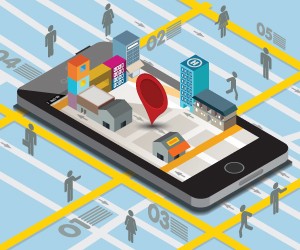Fencing people inside an enclosed area might seem like a rather forceful way to encourage attendee networking and exhibitor interaction, but “geofences”--one of the industry’s hottest new technology tools--encourage networking and connections inside virtual barriers that don’t seem quite as claustrophobic.
These fences get built with RFID (radio-frequency electromagnetic fields) or GPS software that define a geographical area such as a convention center or hotel ballroom.
Instead of living on your name badge, however, the tech lives in a mobile app. The app triggers mobile devices such as smartphones and tablets whenever attendees enter or leave whatever premises are defined by an administrator. This gives user-attendees instant event registration and event access, and organizers and sponsors know when people enter and leave a fenced area.
Geofences can define multiple locations around the world for the same event, thus drawing in a larger, virtual audience. Topi, a geofencing app that is gaining significant traction for events use, includes the capability of automatic language translation. One app user types a message in his or her own language, and the software translates it into whatever languages recipients use. PageBreak
Consider the Advantages
Geofencing offers multiple advantages for both event sponsors and attendees (see sidebar). Apps interact with social media profiles on Facebook, Twitter and LinkedIn and other social networks, enabling users to connect easily with people with whom they have shared history, from schools and workplaces to personal interests and current employers.
“These apps can change the course of a conference,” says Brandon Klein, vice president of collaboration for United Health Group Optum, “because they have all the ancillary benefits to promote networking and collaboration. For example, organizers can preload the app with biographical information on each attendee, or leave that up to attendees to authenticate themselves. When we are both logged in to search for commonalities, I can look at your whole social network. You can have a private conversation with another attendee through the app, or a small group.”
Klein, who used geofencing for 18 conferences in the last six months of 2013, says geofencing software keeps on giving long after the conference ends because people continue to interact with those they met at a “fenced” event.
“When someone you met through these exchanges at an event comes up to you two months afterwards to interact, that is valuable networking that keeps you linked to people with similar interests,” he says.
Meetings industry technology consultant Corbin Ball says geofencing apps such as Topi and Quick Mobile offer even more opportunities for events.
“Exhibitors might send out targeted messages to different categories of participants. CEU credits could be tracked automatically,” he says. “Local area merchants could send discount coupons to convention attendees and AV companies or venues could be notified if unauthorized equipment with an RFID tag linked to a geofence is removed from the premises.”
The wealth of data collected can be important for analyzing just about any audience interaction.
“Geofencing data collection is very meaningful for event sponsors,” adds Eric Francois, chief operating officer of Topi. “They know when someone goes in and out of the fenced area, and this can help a speaker know what attendance is when certain content is being presented. It can also inform exhibitors about how long people stay in their booths. Topi is working now on improved lead retrieval capabilities. Exhibitors make significant investments in their marketing, and the right tools can bring them better ROI.”
Kristi Casey Sanders, vice president creative at Plan Your Meetings, uses Topi to enable networking for global events she organizes. She also believes the software genre benefits both sponsors and attendees.
“Most conference apps are calendar-based and just bring up your agenda/schedule,” she says. “They don’t bring people together to help them network. With Topi, it’s about where you are, who’s around you and what you have in common. Chat rooms are based on what you have in common with others in that room.”PageBreak
What About Privacy?
Because geofencing is one more way for sponsors, exhibitors and others to collect and broadcast personal data, some regard it as yet another digital intrusion on their lives, their vital personal information and their privacy.
Planners who use geofencing answer the issue by pointing to opt-out features on the apps.
“Anyone can certainly decline to download an app, or they can use opt-out features to disconnect from all social media profiles,” says Casey Sanders. “Or, they can connect with one network and not another. But that might be a disadvantage because people can’t easily get relevant information about you at an event.”
The concern about divulging content is being eclipsed by a desire to connect, she contends.
Industry attorney Jonathan Howe agrees, but he warns planners and sponsors to protect themselves with a privacy statement on apps that reveals how collected data will be used.
“It’s like everything else these days–you must hand over data to subscribe to free newsletters, board an international flight, and so on,” Howe says. “Most people just click ‘I agree’ without any concept of what they have authorized.”
Ball encourages planners to make certain their tech providers use PCI (payment card industry) compliant systems for events.
“We are living in different times when technology is exploding and changing rapidly,” Ball says. “One of the casualties is personal privacy. The genie is out of the bottle. All anyone can do is to take reasonable precautions and remember that what goes on the Web stays on the Web.”






